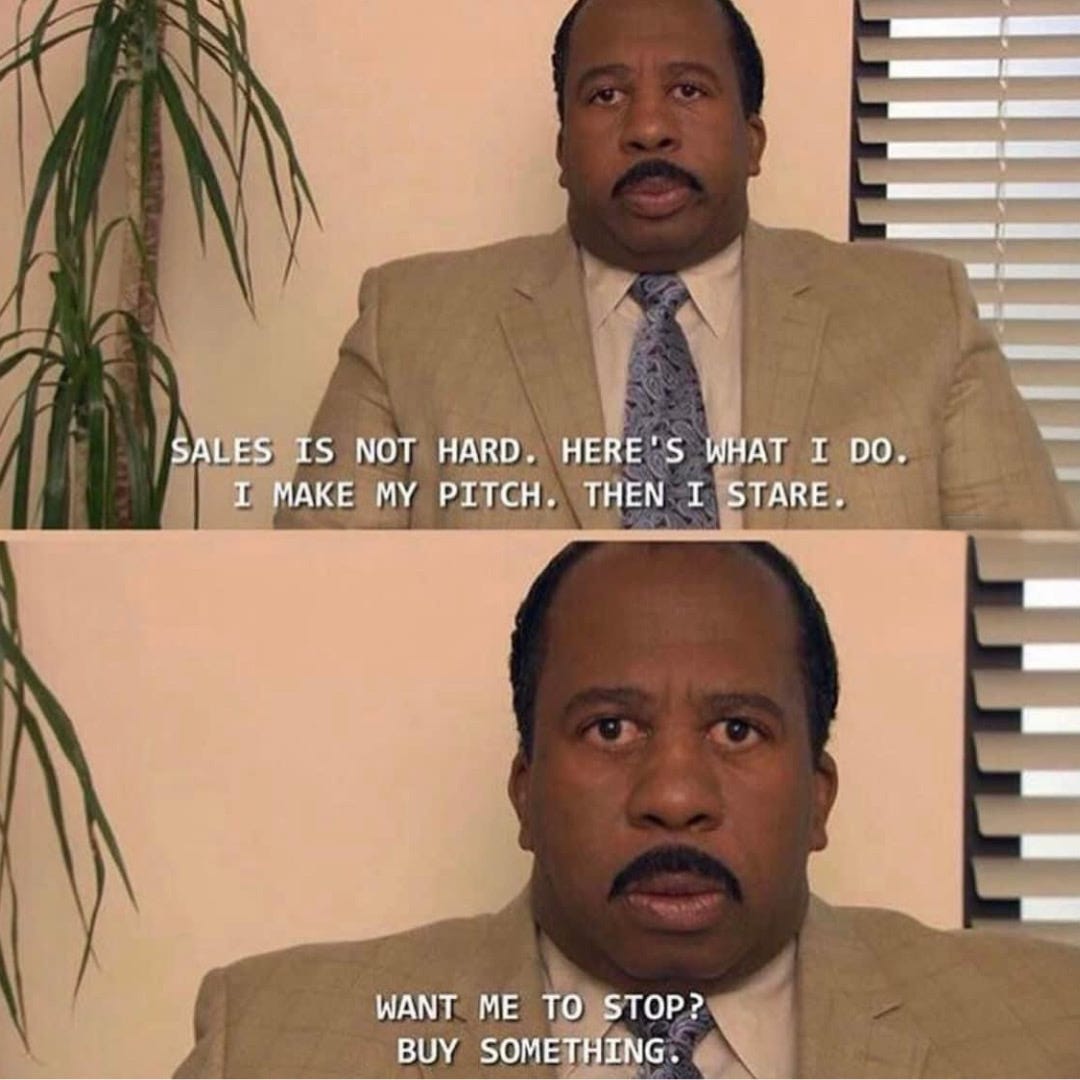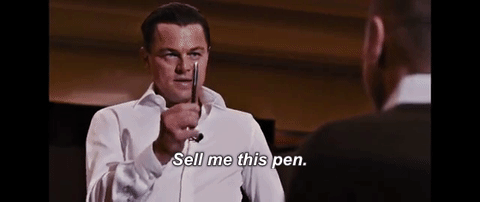ANOTHER DAY
ANOTHER STARTUP INSIGHT
Whenever you're ready, there are 4 ways I can help you:
1. Promote your business to 1,000+ readers:
Put your business in front of 1,000+ highly-engaged founders, operators, investors, and potential early users at a 35% open rate!
2. Get featured in What A Startup:
Let us tell your story. We’ll write a founder-first feature that highlights your startup journey, traction, and insights — then share it with 1000+ of early-stage founders, builders, and investors.
2. Book a 1-on-1 coaching session with Gracie:
In one hour, let's help you get unstuck and map out an actionable plan to acquire your first 100-1000 customers fast.
3. Get warm intro to 100+ investors and VCs:
I’ll personally introduce you to early-stage investors who are active, founder-friendly, and aligned with your vision — no cold outreach, just real conversations that move things forward.I recently came across a founder story online that stopped me in my tracks.
For anyone who's ever struggled with sales in the early days of building a startup — this is a must read.
First of all, let’s call him Robert!
Robert shared his journey of doing 10,000+ sales calls/pitches — but what really stood out wasn’t the number.
It was how he started:
In the early days, he’d jump on sales calls and freeze.
When the lead on the other end asked him to “speak up” or “say that again,” it wrecked his confidence.
He’d stumble.
He’d overcompensate by rambling.
He’d hang up knowing he blew it.
Fast forward, he’s now made 10,000+ sales calls and built a repeatable process for getting customers.
He has learned the hard way — by failing, listening, and watching the best founders and salespeople around him.
What Robert shared was such a practical breakdown of what works (and what doesn’t) in early-stage startup sales.
The story isn’t just about getting better at sales — it’s about surviving long enough to learn how.
It reminded me:
Sales is a skill, not a gift.
And most of us learn it the hard way — through rejection, cringe calls, and painful silence.
So, if you’re still struggling to land your first 5, 10, or 100 customers — this one’s for you.
Let’s break it down.
Here are his 6 biggest lessons — and what I’d add to each after helping and watching early-stage founders figure this out (it might be better than any cold email playbook or sales script you’ve seen online).
1. Obsess over your lead like it’s a job interview
Before every important call, he didn’t just “skim LinkedIn.”
Not just knowing the company name and their industry.
He went deep:
What tools the company uses (tech stack)
Any recent fundraising news
What city they’re based in
Where the prospect went to school
Even personal stuff like a family trip or a golf tournament they posted on LinkedIn
Why?
It sounds small — but these details create instant human connection.
The goal isn’t to be creepy — it’s to show that you actually care about the person you’re speaking to, not just their wallet.
Because relationships are built on specificity.
It’s the same reason we remember the waiter who remembered our name — even though we only met once.
When you mention something they didn’t expect you to know, you instantly stand out.
It’s not manipulation — it’s consideration.
📌 Here’s my note:
If you want to make a killer impression, mention something about their product or landing page — and genuinely compliment a smart detail.
People work hard on that stuff.
2. Outreach that doesn’t suck
You know the kind of cold email most people send:
"Hey, we’re a cutting-edge platform built on top of robust, scalable infrastructure to drive value across multiple verticals..."
NOBODY READS THAT!
Robert switched to this winning format—and it flooded his calendar with calls:
Personal insight: "Hi [Name], saw you’re dealing with [specific pain point]"
Clear value: "We helped [similar company] solve it and reduce [X] by 43% in 6 weeks."
CTA: "Got 15 mins to see if we can do the same for you?"
Example:
“Hi Alex, saw your team is hiring more sales reps. We recently helped another B2B SaaS team (very similar to yours) cut rep ramp time by 43% in just 6 weeks using a customized onboarding system. Got 15 mins this week to see if we can do something similar for you?”
Straight to the pain point.
Packed with results and social proofs.
Less than 100 words.
That’s it.
You’re proud of the code you wrote, I get it.
But no one cares about features — they care about outcomes.
Features are dessert.
Solve the hunger first.
MORE STARTUP INSIGHTS AND STORIES:
🔗 Your MVP should do only 3 things
🔗 This AI startup hit $15M ARR in 1 year by solving a boring problem
🔗 How to make decision more easily as a startup founder
3. The best sales pitches don’t feel like sales pitches
After 10k+ sales pitches, Robert realized that:
The best calls feel like conversations — not pitches.
Sure, he had talking points ready — but the real magic happened when he let the prospect lead the way.
He’d ask one golden question:
“If you had a magic wand and could fix anything right now, what would you change?”
And then they’d listen.
Really listen.
Instead of pitching features, he focused on understanding the problem — what keeps this person up at night?
But here’s the real trick: he didn’t jump to solution mode right away.
He let the prospect explain.
Ramble even.
Unload their stress.
Why?
Because being heard is a need — especially for decision-makers.
And when they feel heard, they trust you more.
Then, you’ll see the solution naturally came later in the convo.
📌 Here is my tip:
Think the sale pitch session like a therapy session — and you're the therapist.
Listen first.
Mirror their pain.
Don’t rush the solution.
You’ll often sell more by selling less.
Also, great founders are mentally prepared for objections — budget, timing, internal red tape — they think through these before they ever jump on the call.
4. Say “NO,” and say it proudly
This one hit hard.
Robert used to say “Yes” to everything.
Every feature request? — “On our roadmap.”
Every weird edge case? — “Totally doable!”
But now, his advice is to be honest.
Just say:
“No, that’s not something we’re building right now.”
That’s it.
No apology.
No waffle.
It sounds counterintuitive — but saying no makes you stand out. It shows you’re clear on what your product does, and that you’re not just another startup trying to say “yes” to everyone.
Because here’s the truth:
Trying to please everyone = pleasing no one.
Saying “no” gives you something rare in early-stage sales: integrity.
When you overpromise, you lose clarity, you blur the edges of what you actually do, and you sound like every other desperate startup clinging to product-market maybe.
When you say “no,” you give your “yes” more power.
5. Always end the call with clear next steps
Never end the conversation without confirming next steps.
Robert used to say “thanks for your time!” and leave the follow-up open.
Now, he makes sure that before hanging up, there’s:
A demo on the calendar
An intro to the final decision-maker
Docs sent and confirmed
Or a scheduled time for the next touchpoint
Not just “cool, I’ll follow up soon.”
Instead:
“I’ll send the doc right after this, and let’s lock in a time for the demo — how’s Thursday at 11am?”
Why?
Because momentum dies in uncertainty.
People mean to follow up.
But they don’t.
Life gets busy.
Make it easy for them by locking things in on the call.
6. Follow up like you mean it.
Most rookie founders give up after 1-2 emails.
Not Robert.
He followed up 5+ times across channels — but with care, not spam.
He found out the best-performing follow-up
A 45-second Loom video where he walks through a problem on their website or LinkedIn and shows exactly how he can help — “Hey [Name], noticed something on your site/LinkedIn — thought this might help you…”
That’s personal.
That’s effort.
That’s signal in a noisy inbox.
Or you can try my favorite way:
Send a short voice note/self-recorded video (like a tiktok video) via LinkedIn DMs — It’s fast, different, and feels more real.
TL;DR
You don’t need to be slick, or manipulative, or pushy.
You just need to:
Prepare like crazy
Listen more than you speak
Follow up like you’re serious
And get on the same side of the table as your prospect
I thought this story was too valuable not to share — especially if you're out there trying to land your first 10, 50, or 100 customers.
It’s not about being perfect.
It’s about showing up, again and again, with curiosity and care.
Final thoughts
This founder ended his post with this:
“If you do all this and still can’t land your first 100 customers… come find me.”
Honestly? — Same.
Because most founders aren’t bad at selling — they just haven’t built the confidence (or structure) yet.
And sales, like anything else in startups, is a learnable loop.
Do it → Reflect → Improve → Repeat.
Your first 100 customers aren’t out of reach — they’re just hiding behind sharper prep and better listening.
THANKS FOR READING!
- Gracie from What A Startup










Whether your are selling, or trying to talk to stakeholders to find product-market fit, these practical steps are super insightful.